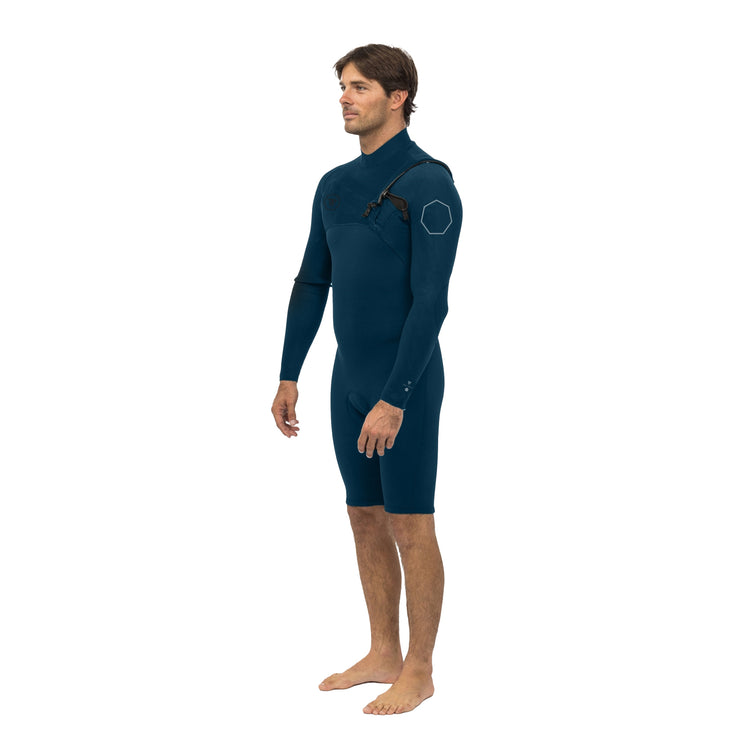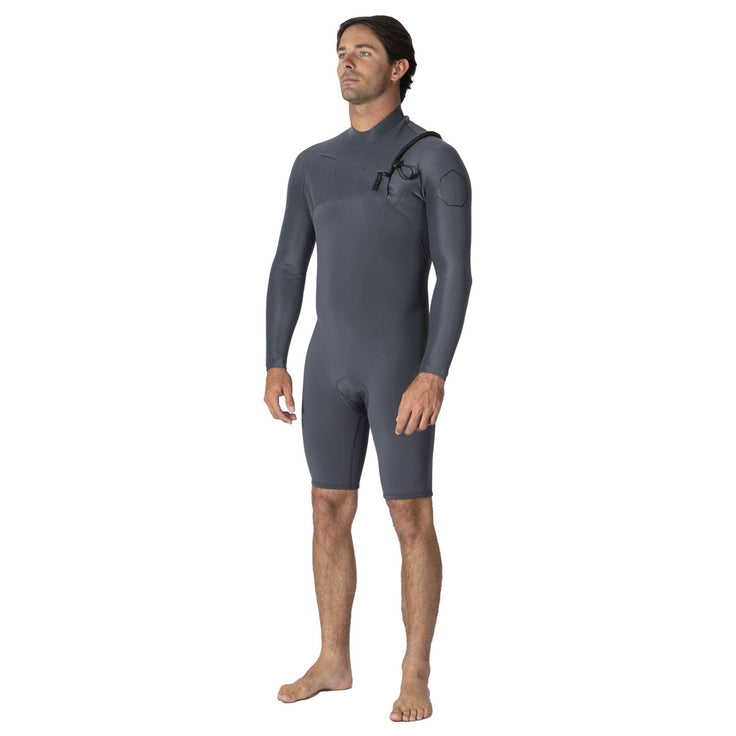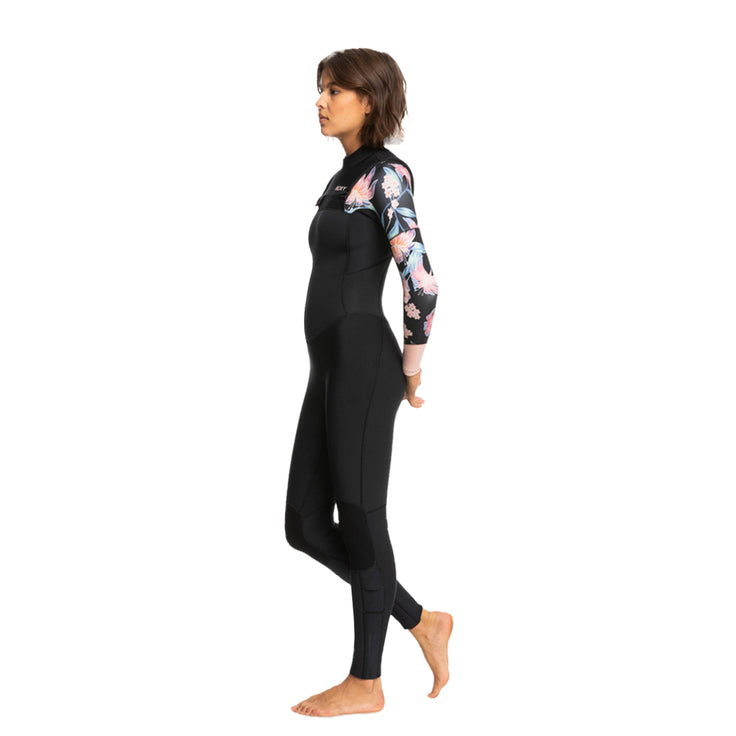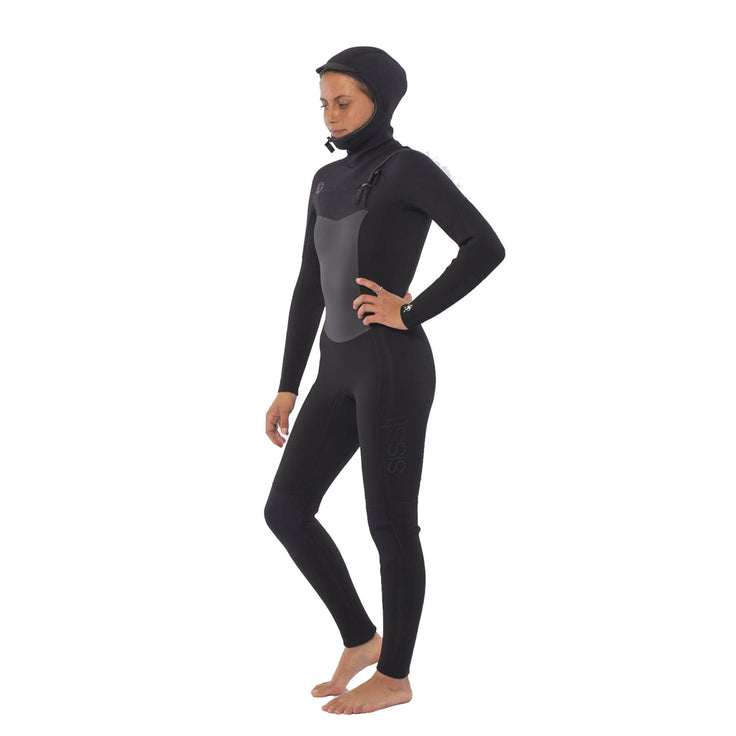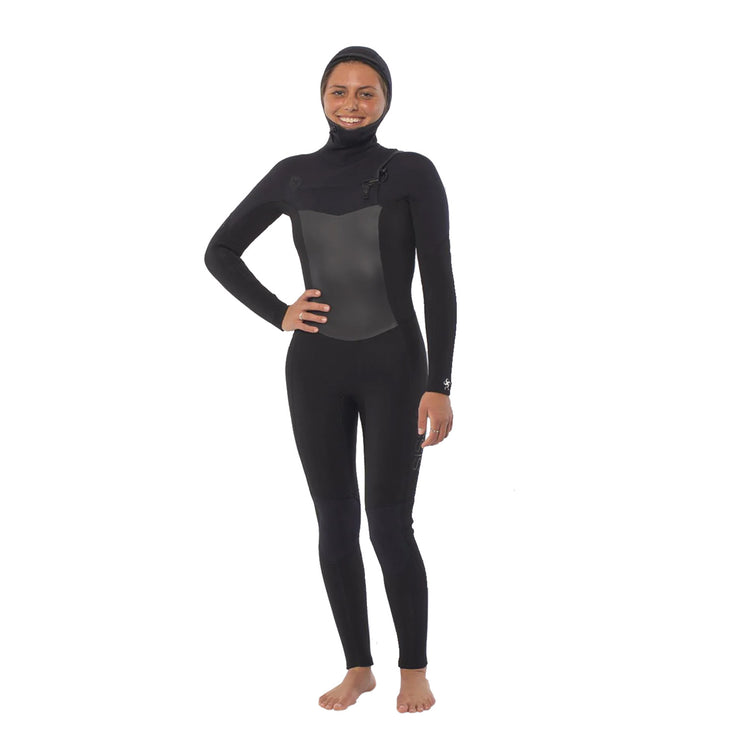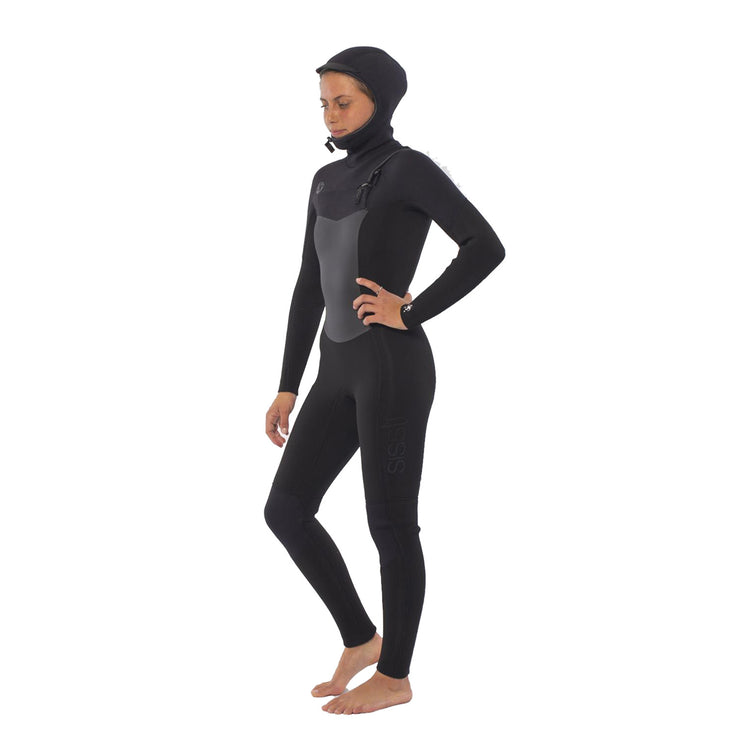GEAR: HOW TO CHOOSE THE THICKNESS OF YOUR WETSUIT?
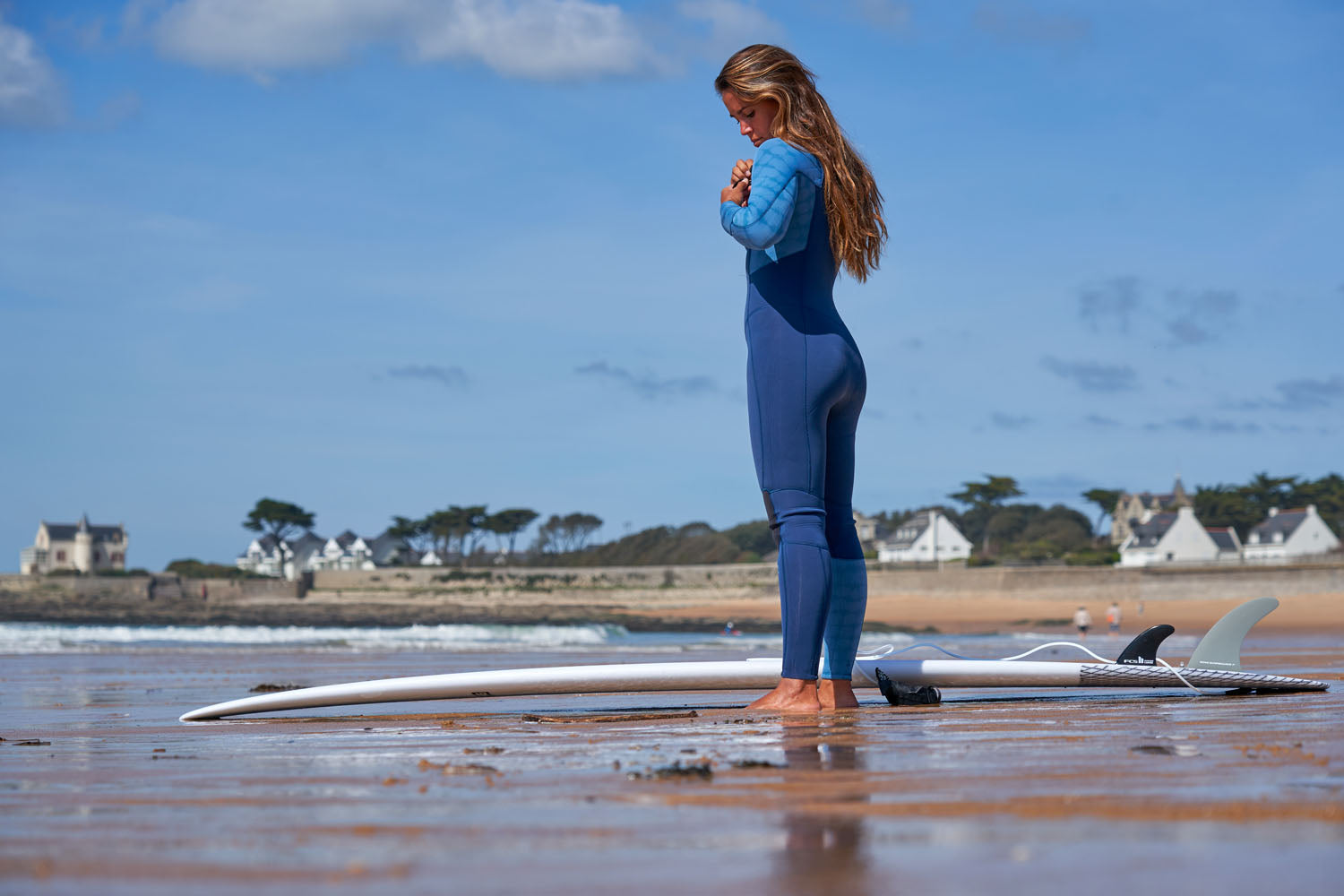
Spend sessions without shivering, or overheating, with our tips for choosing the thickness of your wetsuit!
Like the insulation of the walls of a house, the fabric of wetsuits comes in different thicknesses. Their function is identical, to keep the heat inside when it is cold outside. A thicker wetsuit will retain your body heat better, especially the thin layer of water that infiltrates and heats up between the wetsuit and your skin. But be careful, overheating can also affect you if you choose an inadequate thickness for your wetsuit.
The thickness of a wetsuit is measured in mm and is generally not uniform over the whole body. It is common to have a millimeter more on the upper body than on the arms and legs which are more mobile and less sensitive to the cold. We therefore observe measurements such as 5/4, 4/3 or 3/2 to distinguish the thicknesses on different areas of the body, the first number being therefore the thickness on the trunk and the second number that on the limbs.
A wetsuit is a compromise between flexibility and thickness. A 6/5mm wetsuit will be very effective in extremely cold conditions (below 8°) but very penalizing in terms of flexibility. This is why we rarely choose a wetsuit thicker than 5/4, even if sensitive to cold. Some prefer to favor flexibility by choosing a 4/3 because they tolerate winter conditions very well or do short sessions. However, we advise you not to deviate from the reference ranges of use because your wetsuit is also an accessory that ensures your safety in the water.
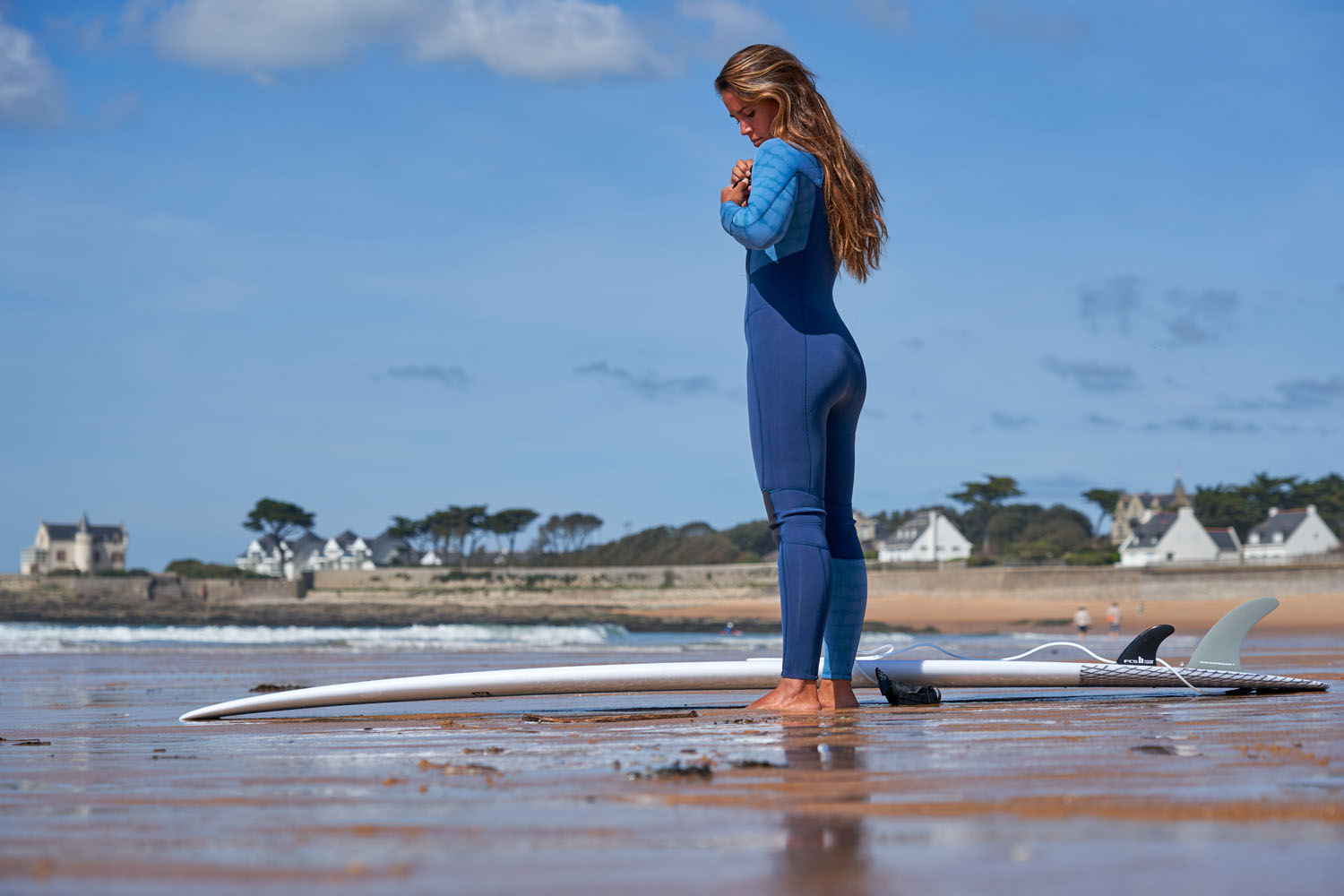
A choice based on the duration of your sessions
The principle is simple: the longer we stay in the water, the more our body struggles to warm up as the session progresses. The less time you stay in the water, the lighter you can ride. A two-minute dive is easily done in a swimsuit in cold water, but to stay there for 2 hours you will have to invest in the recommended wetsuit for this water temperature. On the other hand, getting a thicker than recommended wetsuit is useless. You’d be dying of heat and feel super heavy, for nothing. It’s like wearing a jacket at home… A person who does short sessions (1 hour or less) can ride light by taking a wetsuit 1mm thinner than that recommended for its normal range of use. Beware of the air temperature You can get cold even in hot water. The cool wind that freezes your neck and shoulders while the water is hot can put an end to your session. So a wetsuit is also chosen according to the temperature felt out of the water.WETSUITS AND ACCESSORIES FOR COLD WATER:
For the coldest temperatures, you have the choice between different cold water wetsuits.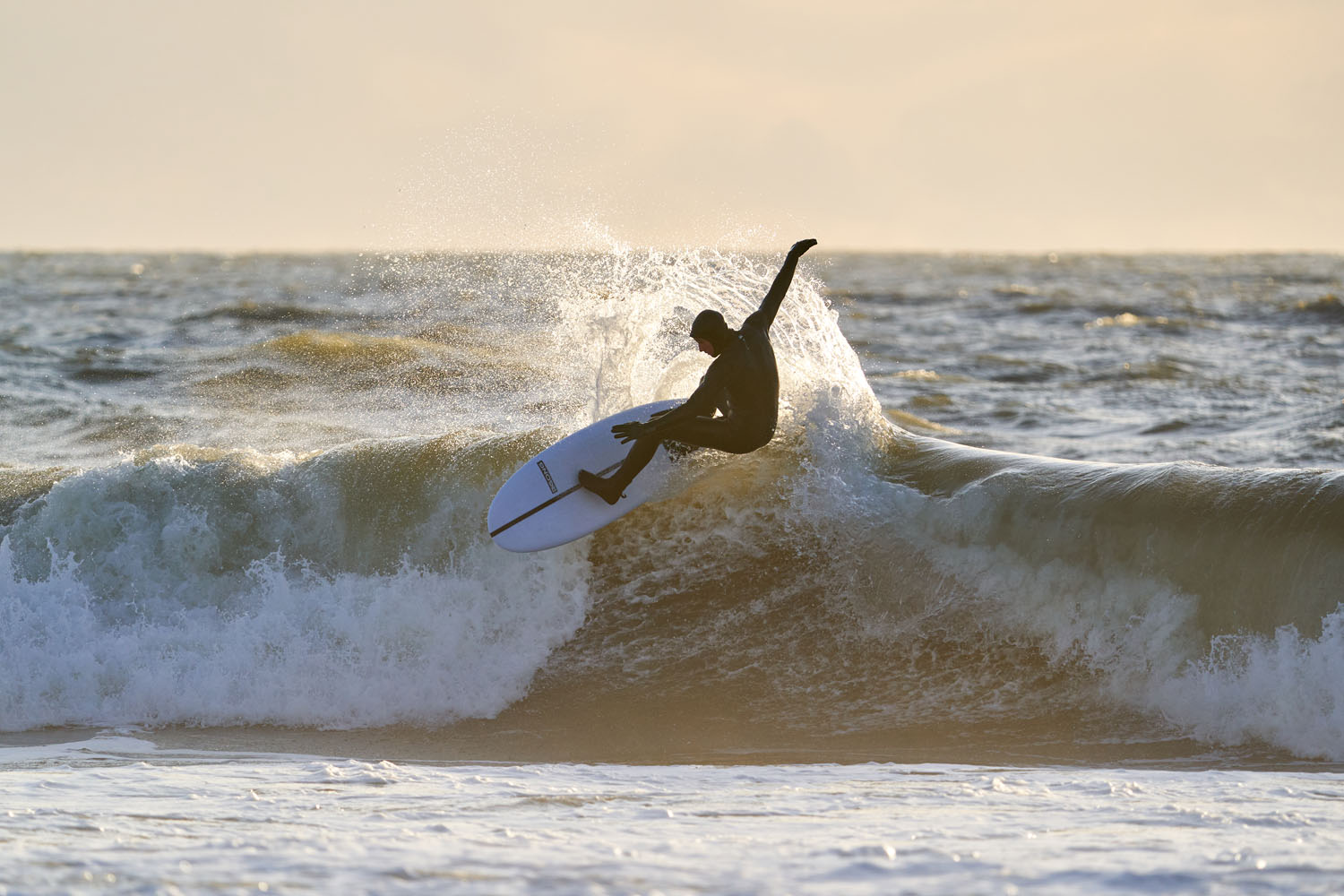 4/3 mm wetsuits
4/3 mm wetsuits
- Temperature of the water: 9-14°C
- Protection level: average to high.
5/4 mm wetsuits
- Temperature of the water: 7-12°C
- Protection level: high.
6/5/4 mm wetsuits
- Temperature of the water: below 8 °C.
- Protection level: very high.
During breaks…
The best way not to get cold is to stay active, but if you want to rest in the middle of your session, we recommend a windbreaker such as the GONG Waterproof Poncho. A game changer to extend your day on the water!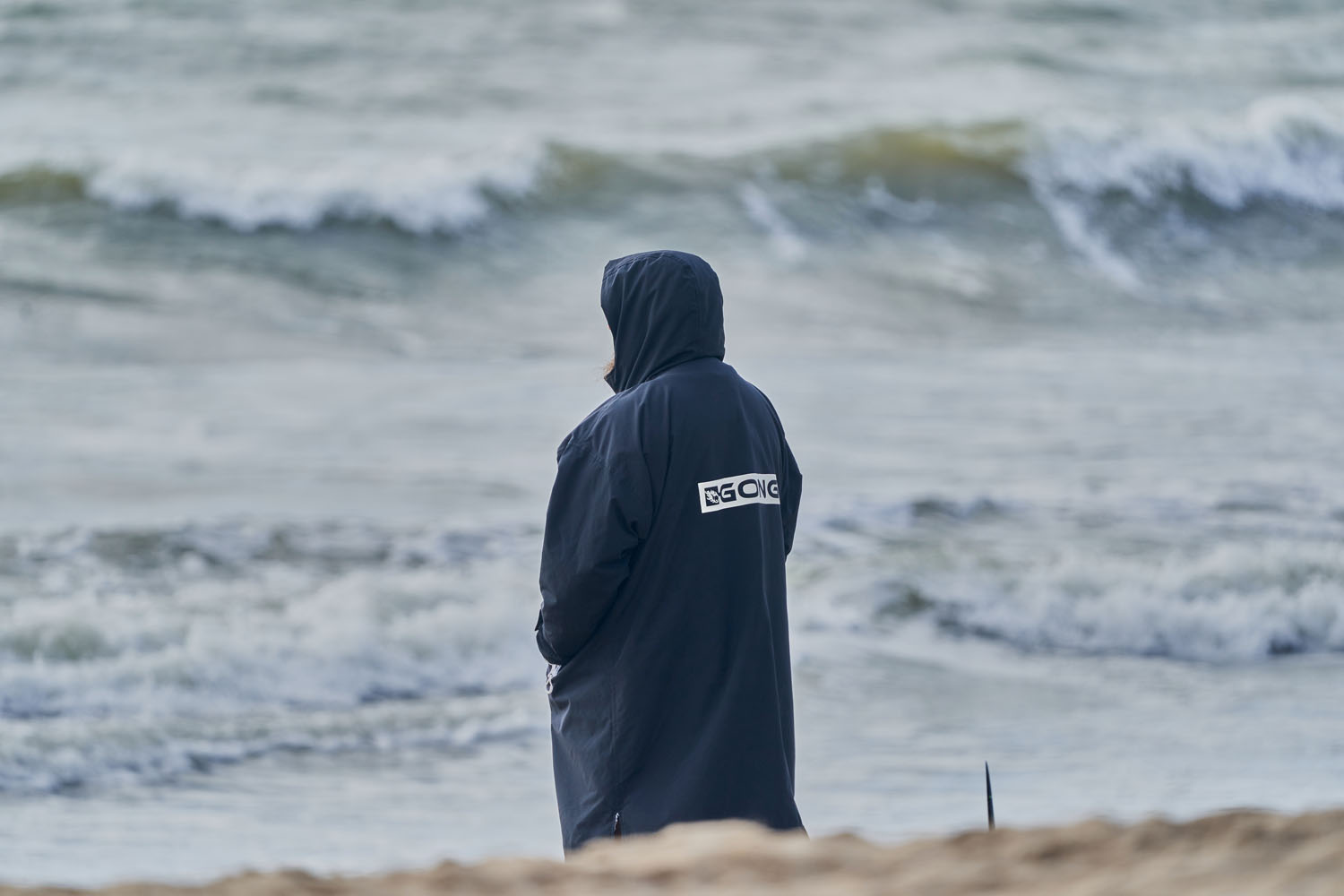
TOPS, RASHIES AND WARM WATER WETSUITS
For water with a temperature of 18° and more. We can go for very light wetsuits with less thickness.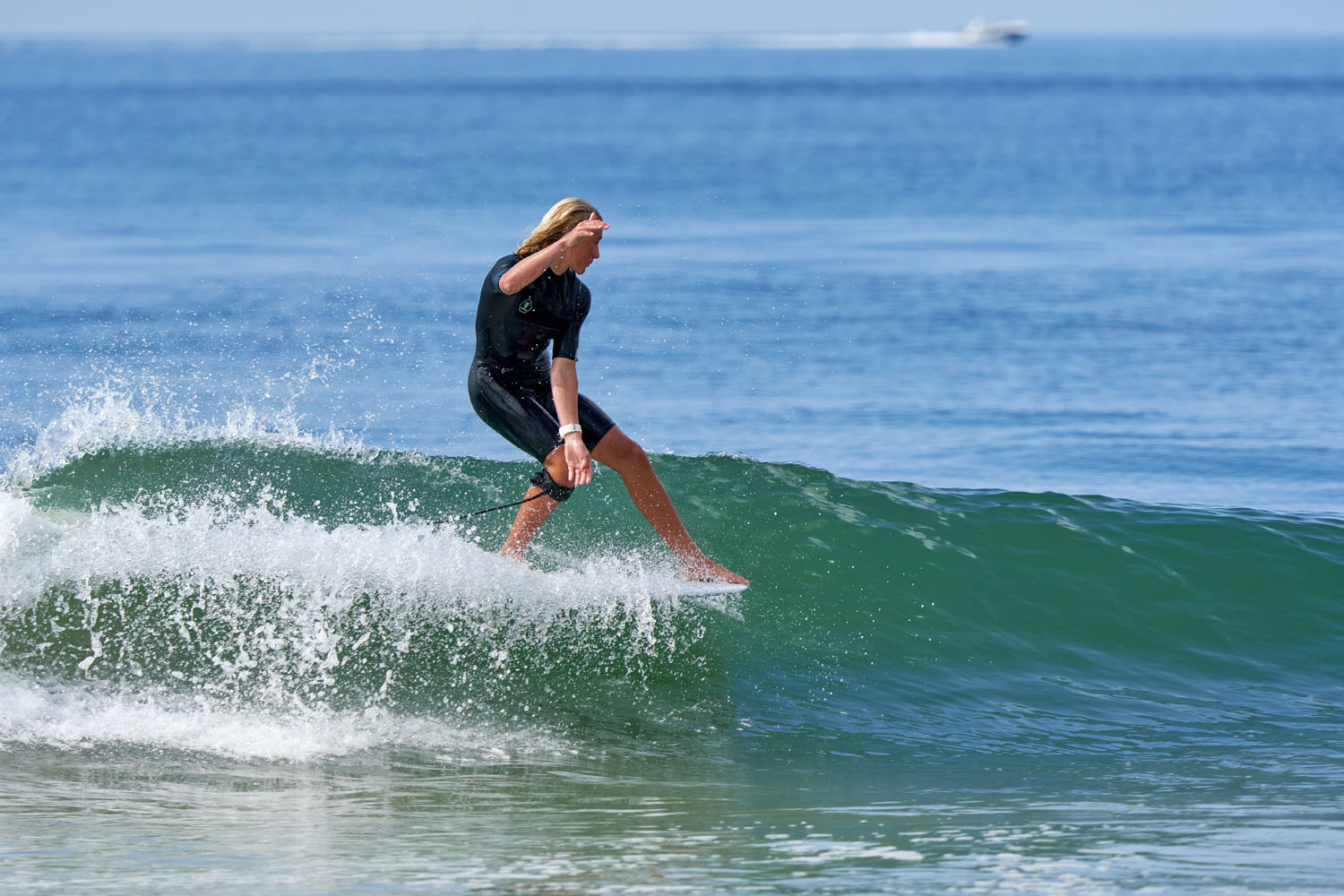 It is an essential for the summer season to take advantage of the long summer days. Depending on your relationship cold, you will have the choice between:
It is an essential for the summer season to take advantage of the long summer days. Depending on your relationship cold, you will have the choice between:
Neoprene tops and rashies
- Anti UV rashies short sessions or for tropical conditions (+ de 27)
- Neoprene top for extra comfort in tropical conditions (+ de 25°)
2/2 mm wetsuits, short sleeves, longjohn or shorty
- Shorty with short legs and short sleeves, to move easily. This is the essential for the summer (+ 22°)
- Long Johns with long legs but sleeveless for maximum shoulder freedom, or for an Oldschool style. Brilliant in slightly cool water under a bright sun (+ 20°)
- Shorty with short legs but long sleeves to keep the upper body warm, and freedom of movement of the legs, a very popular model with bodyboarders in summer. (+ 20°)
- 2/2 mm with short sleeves, long legs to keep your legs warm and to protect your thighs from rashes.
3/2 wetsuits
- Temperature of the water: 13-18°C
- Protection level: light to average.




